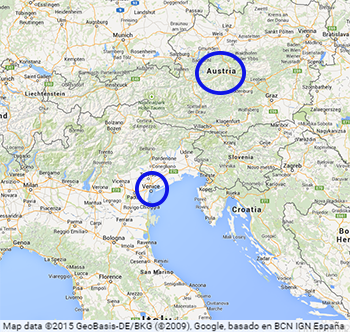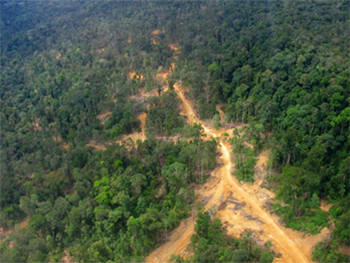InTrans / Feb 16, 2015
‘Drone’ on: the rise of the unmanned aircraft
Go! Magazine
 posted on February 16, 2015
posted on February 16, 2015
What do you think of when you think of a “drone?” The noise bees make? A music chord? An unmanned aerial vehicle? This is the first of a three-part series focusing on “drones.” You will learn what they are, who uses them, and how they could change the way we live today.
You may be thinking that the concept behind drones—unmanned aircraft—is extremely new. However, the first time an unmanned aircraft was used was actually back in the mid-nineteenth century when the Austrians used unmanned balloons carrying bombs to attack Venice. This was the first case of an unmanned air raid on another country. Think about a balloon travelling over to Venice; this was only possible because of how relatively close Venice is to Austria. Today, unmanned aircraft are remote-controlled and can travel over thousands of miles.

Although unmanned aircraft have a history of use in war, they have now started to become more popular in filmmaking, aerial surveillance for livestock management or wildlife mapping, oil and gas exploration, disaster relief, and even scientific research.
Now, let’s take a look at how drones are used for wildlife mapping and filmmaking.
Wildlife mapping
Drones that help to detect and conserve animals and their habitats are known as “conservation drones.” These conservation drones work by flying over a pre-determined area (think of a GIS-controlled airplane) remotely. This conservation drone has a video camera and sensor attached. In general, researchers have found drones to be much less invasive and safer than sending humans out into the wild.

Because light-aircraft crashes are the number one cause of death for wildlife biologists, there has been a lot of acceptance towards this type of drone technology. For example, researchers have crashed trying to track animals such as black bears in Florida and caribou in Alberta, Canada. Instead, conservation drones can videotape what is happening from the aerial level while researchers remain safely on the ground. More recently, conservation drones have been used to stop illegal logging and poaching* through aerial photography. Without an aerial photo, illegal logging can go unnoticed, which can greatly harm animal habitats and the surrounding ecosystem.
Filmmaking
Ever heard of the movies Skyfall and Transformers: Age of Extinction? Directors Sam Mendes and Michael Bay were given permission by the Federal Aviation Administration (FAA), along with four other filmmakers, to use drones for filming.
However, up until now, the FAA did not allow commercial use of drones because of safety concerns.
The main concern is that people will not use drones “responsibly.” For example, in 2013, a man flew his drone from his Brooklyn apartment balcony where it crashed in the middle of Grand Central Station, which 750,000 visitors pass through every day. Luckily no one was hurt, but the man was arrested for “reckless endangerment.” Thinking about how many more drones could be in the air in the future brings up these types of concerns.
The FAA has not yet come up with concrete rules for drone usage. As of now, the rules that exist require drones to fly below 400 feet and at least five miles from the airport. The rules around airports are strict because a drone crashing into a plane could be disastrous.
Did you know?
* Poaching is illegally hunting, killing, or capturing animal or plant species. Some popular species known to be the target of poachers include rhinoceros for their ivory horns and tigers for their fur. Both products are sold on the black market for thousands (or even millions) of dollars.
Related links
http://www.orangutan.com/projects/conservation-drone-project/
http://www.indiewire.com/article/how-safe-is-drone-filmmaking
By Jackie Nester, Go! Staff Writer